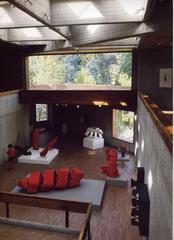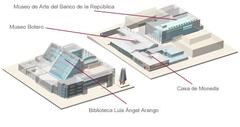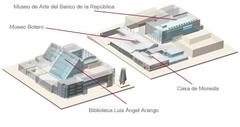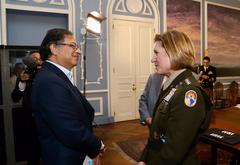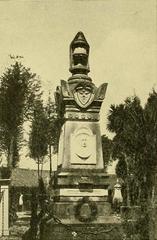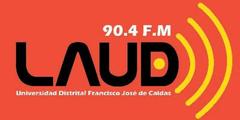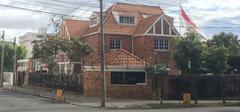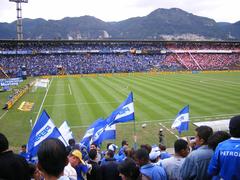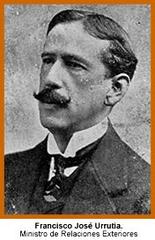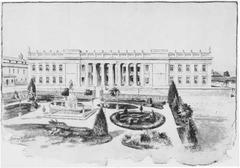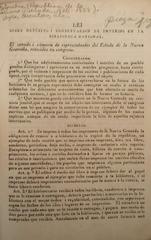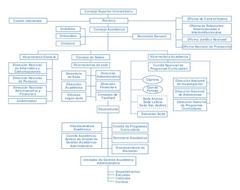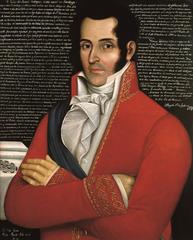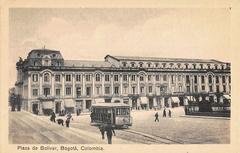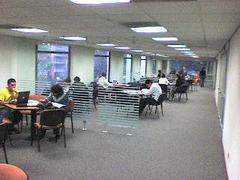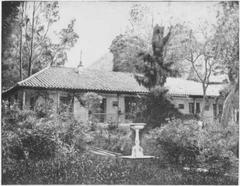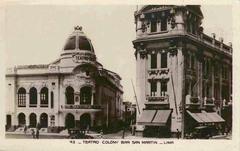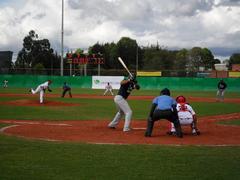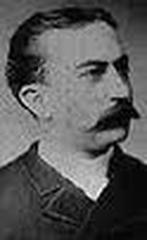Norte Quito Sur Bogotá, Colombia: Visiting Hours, Tickets, and Historical Sites Guide
Date: 14/06/2025
Introduction
The Norte-Quito-Sur (NQS) corridor is a vital urban artery in Bogotá, Colombia, running from the affluent north through the city center and extending to the southern districts and beyond. More than a transportation route, the NQS encapsulates Bogotá’s complex history, cultural diversity, and urban development. Originating from the integration of Avenida Ciudad de Quito, Avenida Novena, and Autopista Sur, the NQS follows the path of former watercourses, shaping the city’s evolving landscape. Today, the corridor links colonial-era neighborhoods, contemporary cultural districts, expansive parks, and lively markets, offering visitors an immersive experience of Bogotá’s multifaceted identity (Trek Zone; Academia.edu; Bogotá Turismo).
Table of Contents
- Introduction
- History and Urban Evolution
- Key Landmarks and Attractions
- Visitor Information: Hours, Tickets, and Accessibility
- Practical Travel Tips
- Cultural Experiences and Special Events
- Safety, Transport, and Accessibility
- Frequently Asked Questions (FAQ)
- Conclusion and Recommendations
- References
History and Urban Evolution
Origins and Development
The NQS corridor emerged in the early 20th century as Bogotá expanded. It unified three principal avenues: Avenida Ciudad de Quito, Avenida Novena, and Autopista Sur (Trek Zone). These routes not only structured urban growth but also followed historic water channels, influencing the layout of neighborhoods and communal spaces (Academia.edu).
20th Century Transformation
With rapid urbanization, the corridor became essential for north-south transit. The advent of the municipal tramway in the early 1900s spurred cohesive development, cementing NQS as a backbone of city life. Later, the TransMilenio bus rapid transit system, launched in 2000, brought dedicated lanes and improved mobility while introducing so-called “residual landscapes,” or underutilized urban spaces, which remain both a challenge and an opportunity for renewal (Academia.edu).
Cultural and Socio-Spatial Dynamics
The NQS corridor also mirrors Bogotá’s socio-economic divides, connecting affluent northern neighborhoods with more working-class southern districts. Urban densification, new residential developments, and commercial centers have transformed the corridor, but spatial fragmentation and social contrasts persist (Academia.edu).
Key Landmarks and Attractions
Main Sites Along the NQS
- Torre Colpatria: Formerly Colombia’s tallest building, features an observation deck with panoramic views.
- Central Cemetery of Bogotá: A historical and cultural landmark established in 1836.
- Museum of Modern Art: Exhibits Colombian and international contemporary art.
- Planetarium of Bogotá: Science center focused on astronomy and educational programs.
These sites are accessible from major TransMilenio stations such as CDS Carrera 32 and Concejo de Bogotá (Trek Zone).
Notable Neighborhoods and Green Spaces
- Usaquén: Known for its colonial center and weekend artisanal market (open Sat–Sun, 10:00 AM–6:00 PM, free entry).
- Chapinero: Features Parque El Virrey, vibrant nightlife, and the Zona G gastronomic area.
- Teusaquillo: Home to the Museo Nacional de Colombia and Simón Bolívar Park.
- Southern Districts: Kennedy, Tunjuelito, Ciudad Bolívar, and Bosa offer local markets, festivals, and street art.
Visitor Information: Hours, Tickets, and Accessibility
Transit and Access
- TransMilenio BRT: Runs along NQS from 4:30 AM to midnight daily. Tickets (~2,950 COP) are sold at station kiosks or via rechargeable cards.
- Attractions: Most museums and cultural sites are open Tues–Sat, 9:00 AM–6:00 PM; Sundays 10:00 AM–4:00 PM. Parks generally open from early morning until evening. Admission fees vary; many museums are free on Sundays.
Accessibility
- Public Transport: Most major sites are accessible via TransMilenio. Newer stations have ramps and elevators; older areas may have uneven sidewalks.
- Wheelchair Access: Museums and cultural venues such as Museo Nacional and Chapinero galleries are generally accessible.
Practical Travel Tips
- Visit during weekdays outside of rush hours for a comfortable experience.
- Wear comfortable walking shoes and carry water.
- Use official taxis or ride-share apps at night.
- Learn basic Spanish phrases for easier communication.
- Check event calendars for special exhibitions, street fairs, or Ciclovía Sundays (when the corridor is closed to vehicles for recreational activities).
Cultural Experiences and Special Events
- Ciclovía Sundays: Every Sunday (7 AM–2 PM), main roads including parts of NQS are reserved for cyclists, joggers, and pedestrians.
- Festivals: Simón Bolívar Park hosts events like Rock al Parque. Corferias Convention Center offers trade fairs and cultural expos.
- Markets and Food Tours: Explore the Paloquemao Market or join guided culinary tours in Chapinero and Usaquén for local dishes like arepas, empanadas, and Colombian coffee.
Safety, Transport, and Accessibility
- Safety: Stay in well-trafficked areas during the day; avoid isolated spots at night. Use authorized taxis or apps (Travelsafe-Abroad).
- Walking: Some sections are pedestrian-friendly, but remain alert for traffic and uneven sidewalks (Dialnet).
- Health: Bogotá’s altitude (2,640 meters) may require acclimatization; stay hydrated and rest upon arrival.
- Money: Use ATMs in malls or banks. Carry some cash for markets and street vendors.
Frequently Asked Questions (FAQ)
Q: What are the NQS visiting hours?
A: The corridor is accessible 24/7, but individual attractions have specific hours (generally 9:00 AM–5:00/6:00 PM).
Q: How do I get TransMilenio tickets?
A: Purchase at station kiosks or with rechargeable cards.
Q: Are guided tours available?
A: Yes, many agencies offer tours in English and Spanish focusing on history, street art, and food.
Q: Is NQS safe for solo travelers?
A: Central and northern sections are generally safe during the day; exercise caution in southern districts and at night.
Q: Are attractions along the NQS free?
A: Public parks and markets are mostly free; museums and events may charge modest fees, with free days available.
Conclusion and Recommendations
The Norte-Quito-Sur corridor offers a fascinating cross-section of Bogotá’s history, culture, and daily life. Whether you’re exploring colonial Usaquén, attending a festival in Simón Bolívar Park, or sampling local cuisine in Chapinero, the NQS provides efficient mobility and diverse experiences. Stay updated on transit and event schedules via official tourism websites and mobile apps like Audiala for a seamless visit. Take advantage of guided tours and local insights to deepen your understanding of this dynamic corridor.
References
- Trek Zone – Norte-Quito-Sur Corridor Overview
- Academia.edu – Paisaje residual en Bogotá: análisis del deterioro urbano Ejes de Transmilenio Avenidas El Dorado, Fernando Mazuera, Caracas y Norte Quito Sur
- Bogotá Turismo – Official Visitor Information
- Travelsafe-Abroad – Safety Guide for Colombia
- Dialnet – Norte-Quito-Sur Visitor Guide


